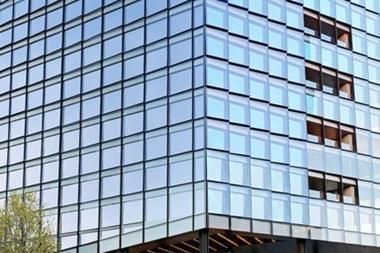I think office spaces will play a big part in alleviating the expected major mental health issues brought on by the pandemic. However, if workplaces are going to have the maximum impact on this issue, designers will need to ensure the spaces they create meet new levels of wellbeing, placing the issue of health centre stage.

Wellness strategies have often been viewed as a ‘nice-to-have’ by some in the industry. Now, the feedback I am getting from both occupiers and developers is that wellbeing is essential to the office of the future and without a clear plan to keep people safe – and in the longer term make them healthier – organisations will find it difficult to attract talent back into the office.
We have seen many innovations in wellness over the last five years, with the strategies we have implemented being very complex and multi-layered. So, if we are going to turbocharge the wellness agenda, where do we start?
Firstly, I think we need to ensure offices address the key themes of light, air, sound and comfort in new and more radical ways. People will still want to see visible demonstrations of the wellness agenda, such as biophilia and healthy eating, which have a major part to play in shaping holistic wellness strategies and celebrating a commitment and investment in health. However, people returning to the office will also be more conscious of how intangible qualities and invisible hazards, such as viruses, can shape their experience and wellbeing.
Top selling point
This change in mindset has resulted in air quality being an even bigger consideration in office design, becoming a key ‘selling point’ for developments like never before. Designers will have to work side by side with engineers and facilities departments to innovate.
While active filtration systems and passive architectural solutions are key to this, project teams will be under increasing pressure to tune their existing systems to create the right balance between effective control and airflow with sustainable use of energy.

Another vital way of boosting wellness is through acoustics, which is linked to giving people a choice of where to work based on their task. For example, people lucky enough to have had a quiet space at home to work from during the pandemic will have become accustomed to this environment for focused work. This will have shifted their expectations, placing greater pressure on the office to recreate quiet spaces alongside work settings that bring people together in new collaborative ways. Returning to a collective environment, and relearning how to share space, will be stress-inducing to a number of people, with multiple workplace settings a key way of alleviating this.
This activity-driven approach will mean designers and occupiers will work together on rethinking the ratio between traditional desking and an array of different work settings, each offering different qualities. Creating the right mix will be built upon a deep understanding of a company’s working culture, placing extra importance on the due diligence and early strategy stages of the project to ensure this level of planning is factored in from the start.
I fear offices that don’t express a genuine commitment to wellbeing will struggle to attract staff and tenants. A heightened wellness agenda can help our industry settle down into a new working rhythm and allow people to relearn what it means to be together in an office.
Wellness is now a mainstream part of our working life – not an optional extra – and should be used to rebuild confidence in the office and, by extension, the cultures of many organisations.
Helen Berresford is head of ID:SR at Sheppard Robson





























No comments yet